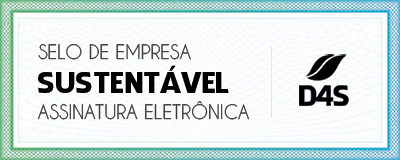
There is no better way to explore all of handheld gaming history than with Pocket. Transform Pocket’s display into the display on an original GB, GBC, or GBA. Pocket’s 615ppi display allows astonishingly accurate recreation of original hardware display characteristics like backlight LCD effects, pixel grid patterns and LCD subpixel patterns. Pocket has a digital audio workstation built in called Nanoloop. Drill Dozer is proof that some of a handheld’s best games can still come past its prime.
- Lovley, but the floor is repeatative, and there needs to be a background, as well as a more natural water color.
- The GBA port of Tony Hawks Pro Skater 2 had all of the main features of the home console version without the multiplayer or level editing options.
- As you can see, there is a single “4 colors” palette for the background layer, and two “3 colors + 1 transparent color” palettes that the sprites can use .
- Since Nintendo launched the Game Boy in 1989, the unit has always had a vertical alignment, meaning that the screen is on the top and the buttons are on the bottom of the unit.
In a world where we assume all devices connect to Wi-Fi to get software and updates or let you play online, the Pocket is a surprisingly offline device. It has a microSD card slot too, but that’s only for firmware updates to the handheld’s OS — which you have to sideload after having downloaded them on another computer. The Gameboy Advance is one of the most popular handheld consoles of all time, a lot of time and effort has been placed in developing GBA emulators for Windows and other operating systems. You will enjoy the same Gameboy gameplay experience with these emulators as they offer graphic enhancements and new features as well. Not much needs to be said about A Link to the Past, the classic top-down Zelda adventure for the SNES.
Can a link cable connect a Gameboy Colour and a Gameboy Advance SP?
Now, since I kind of actually do have some credibility on this topic and I have actually tried doing this in the past, I can say that patching the DS ROM is not really worth the time of patchers. At least in terms of graphics patches, not being able to handle sprites in bulk makes the whole patching process MUCH more painful. Seriously, to update my patch, all I need to do is take the updated sprites, drop them into APSE and save. With DS tools on the other hand, you have to find the NARC file, which just sucks, open it, load up your new 80x sprite save, and then move onto the next NARC file for the next pokemon. The cost of refreshing the hardware OAM is linear with the number of sprites being displayed, and the majority of the copying can be done using DMA. The total memory cost for this system is almost neglible, 1k.
Ideally, when you allocate an OAM entry, you want to store the entry number so that you can change its display flags to move the sprite around on the screen. This requires that either the entry number never changes, or whenever it changes (due to Z-depth changes) you have to track down all references to this OAM entry number and change them. If you are looking to make a dark colored mage, you’ll have to make a palate. There’s a tutorial I’ll link on how to do it (it’s really easy, but you’ll need a few programs). Anyone tried or actually use original game battle animations on their own Fan Game?
Hear Chris Pratt try to be Italian again in new Super Mario Bros. movie trailer
The truth is, the Gamepak uses 25-bit addresses but its bottommost bit is fixed at zero, so the only 24 remaining bits are set. In this game , the player can enter two different rooms, one relatively normal and the other with a nostalgic setting. Depending on the room the character is in, the same score will sound modern-ish or 8bit-ish.
Popular Games
Rodrigo Copetti ,Non-studio photos, game screenshots and cooking games diagrams. Special use in multimedia I only ask that you at least state the author’s name, the title of the article and the URL of the article, using any style of choice. Games are distributed in a new proprietary cartridge called Game Pak. The majority of GBA games used it for accompaniment or effects. Later ones will optimise their music for PCM and leave the PSG unused. Rendered Sprite layerThe size of a sprite can be up to 64×64 pixels wide, yet for having such a small screen they will end up occupying a big part of it.



